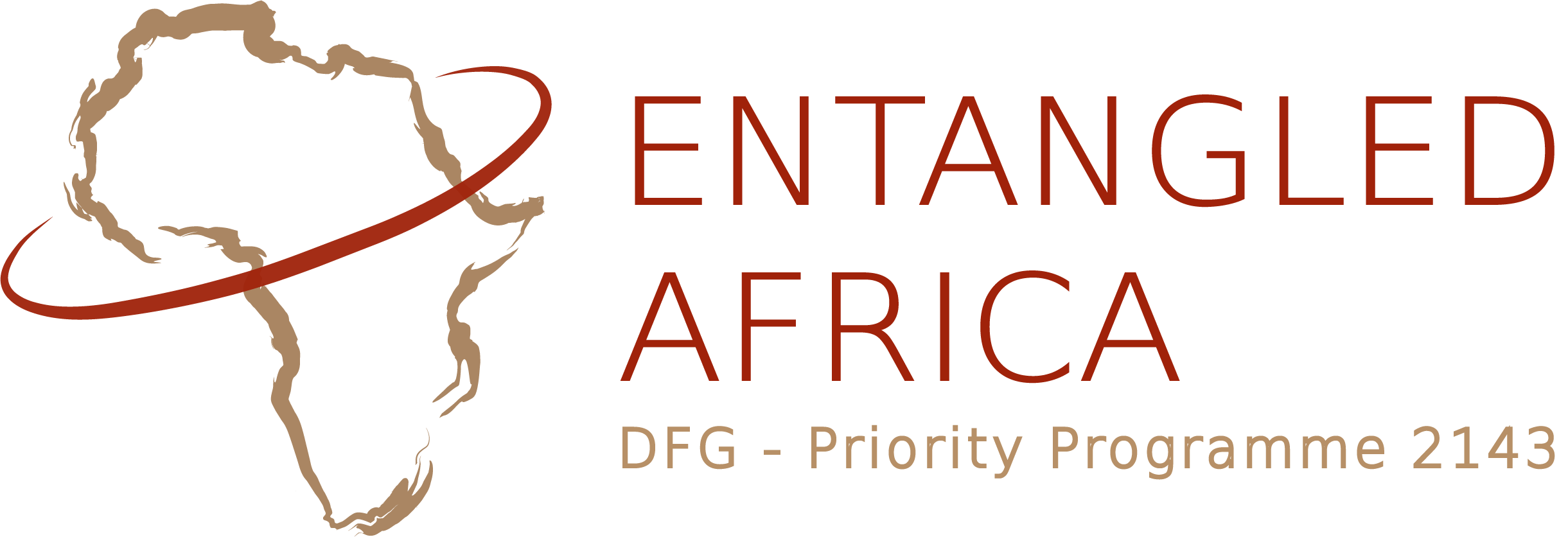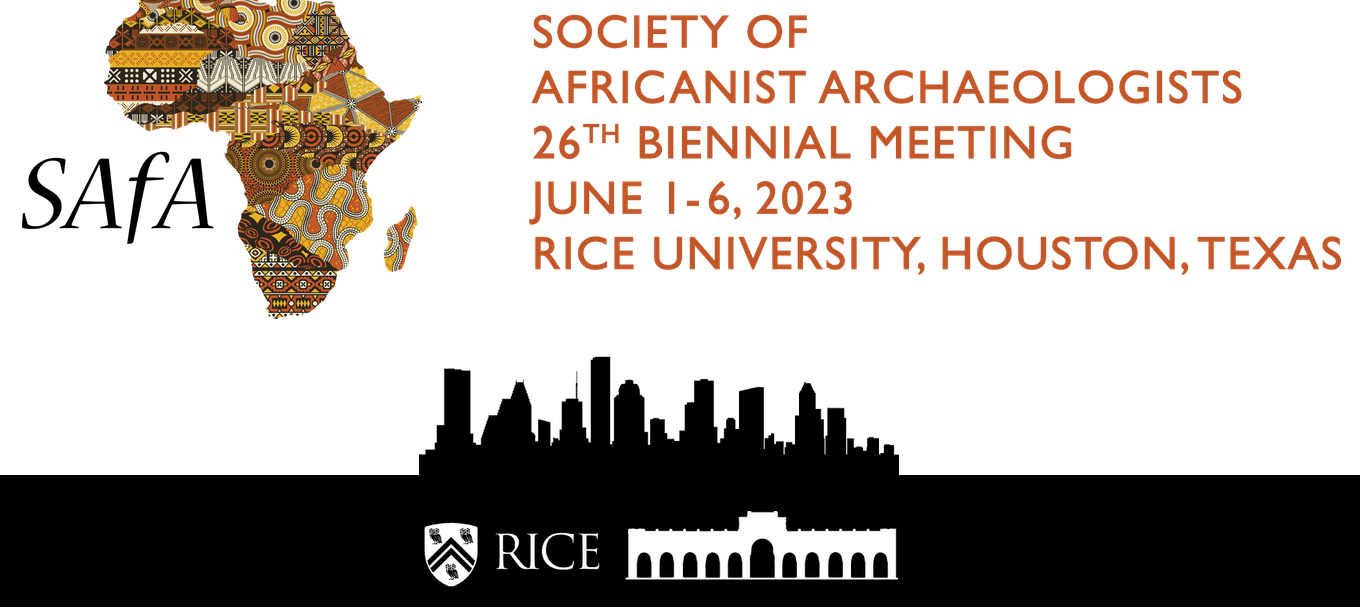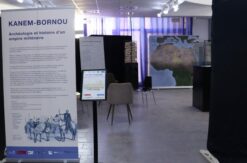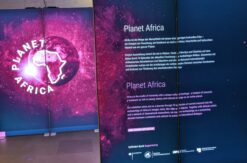Conference review: Society of Africanist Archaeologists (SAfA), Houston, Texas - June 1st-6th 2023
The 26th biennial meeting of the Society of Africanist Archaeologists (SAfA) was held in Houston, Texas (USA) between June 1st and June 6th 2023 (Figure 1). The meeting was hosted by Rice University, and extremely well organised by faculty staff Jeffrey Fleisher and Mary Prendergast (Figure 2), and their colleagues.
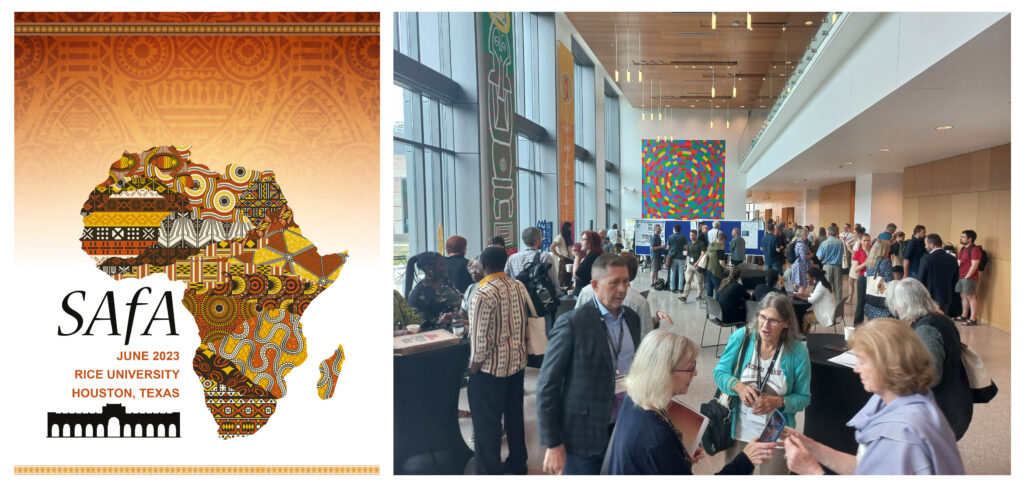
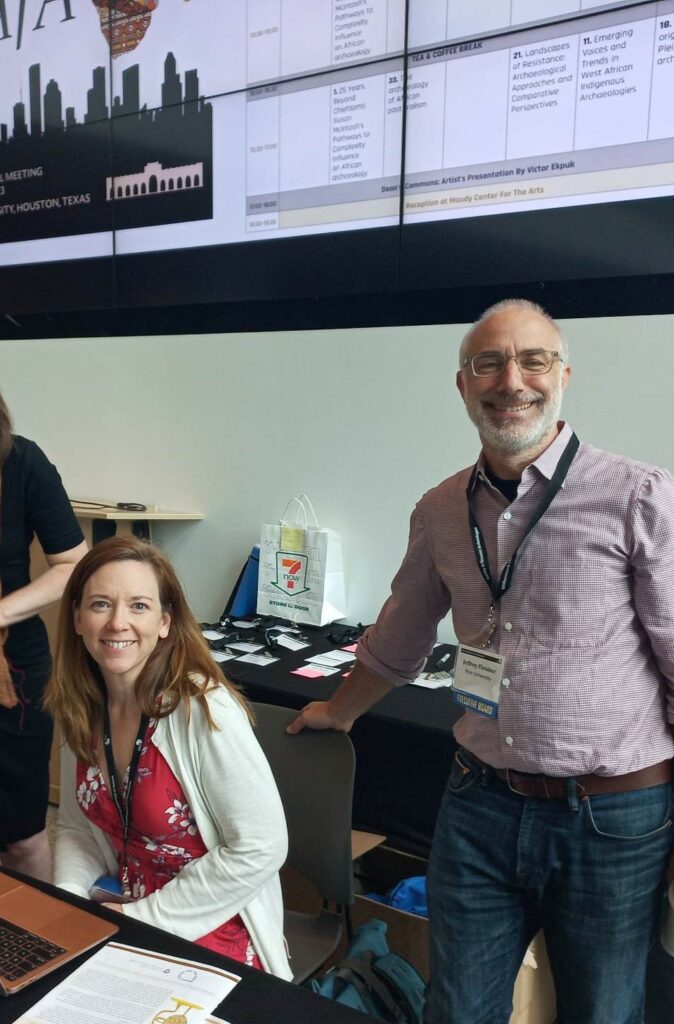
The meeting consisted of 39 sessions, comprising presentations and roundtables, poster presentations, and was prefixed by a dedicated student day.
This was the first fully in-person meeting of the SAfA since the meeting in Toronto (CA) in 2018. The 25th meeting scheduled for September 2020 in Oxford (UK) had to be postponed due to the covid-19 pandemic, and was eventually held online across August and September 2021. This was therefore the first opportunity for the projects of the Entangled Africa program to present in person at SAfA since the project began in 2019.
In this task, researchers from Entangled Africa were well-represented at the meeting, both in person and online. Present were Carlos Magnavita and Cezary Szymanski (SPP Project 4), Henning Schreiber, Nikolas Gestrich and Esther Morgenthal (SPP Project 9), Sonja Magnavita (SPP Project 13), Kristina Pfeiffer and Jacob Hardt (SPP Project 7), and Steven Matthews and Ulrike Nowotnick (SPP Project 2) (Figure 3). Also online were Friederike Jesse (SPP Project 1) and Alexa Höhn (SPP Project 5).
Details of each of the respective individual research projects that comprise the Entangled Africa program, can be found here.

Day 1 - Friday June 2nd
The first official day of the conference was June 2nd, with the student day being held on June 1st. This consisted of two useful panels discussing writing journal papers and completing grant applications.
The first day of the meeting proper comprised a series of consecutive plenary talks by senior researchers on important themes, including decolonisation, heritage management and conflict zones, which affect contemporary archaeological practice in Africa.
In the afternoon, sessions addressed such diverse subjects as community archaeology (session 6), metallurgy (session 8), archaeogenetics (session 19), environments (session 25), and archaeometry (session 28).
Friederike Jesse (SPP project 1) presented (online) their paper ‘Defining borders by mapping pottery and stone artifacts? Examples from the late prehistoric Sahara’ in the session Rethinking Fuzzy Boundaries and Sharp Borders in African Material Culture (session 31). The session addressed the perennial problem of aligning behavioural boundaries, with their shallow time depth, considerable trait complexity, and highly dynamic nature, with those units produced by archaeology, based on limited and differing traits, and greater time depth, and the effect that archaeological systematics have on their construction. The session, organised by Dirk Seidensticker, Nicolas Nikis, and Adrien Delvoye, was most rewarding, concluding with a lively and critical discussion.
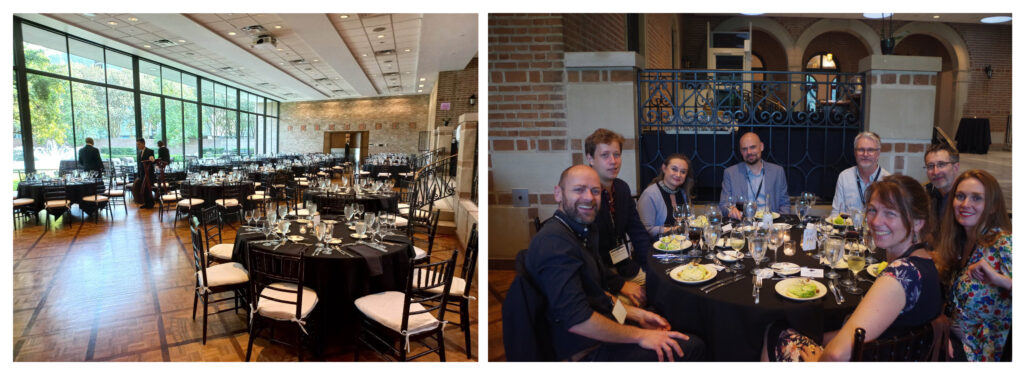
The first day concluded with a memorial to the late Nicholas David, who made major contributions in ethnography and ethnoarchaeology (remembered by his wife, Judy Sterner, and colleagues in a recent issue of Azania).
In the evening a gala dinner (Figure 4) was held at the beautiful Faculty Club at Cohen House, a small 1920’s house built in the same redbrick Mediterranean Revival style as much of the early buildings on the Rice University campus (Figure 5).
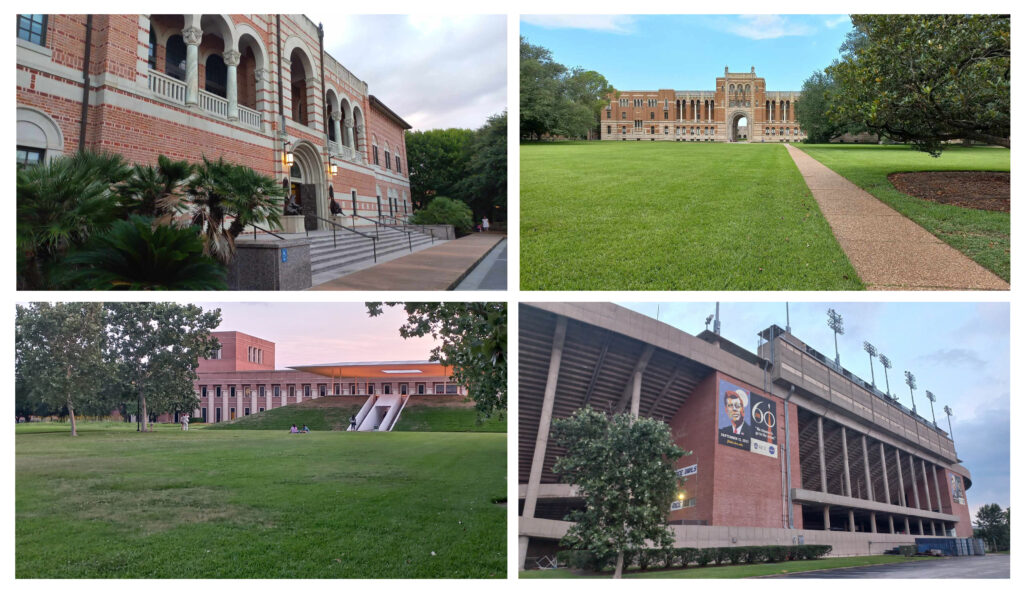
Day 2 - Saturday June 3rd
The second day of the meeting begun with sessions on museums and cultural heritage (online) (session 7), environmental history (session 12), pleistocene and early holocene hunter-gatherers in southern Africa (session 14), historical archaeology (session 16), and Maritime archaeology (session 24). The morning also included the first of several sessions honouring retiring professor of anthropology at Rice University, Susan McIntosh, recognising her significant and lasting contribution to African archaeology (session 17).
Steven Matthews and Ulrike Nowotnick (SPP project 2) presented on their Connecting Foodways project with a paper titled ‘Connected cuisines: Comparing the everyday foodways of sub-Saharan North Africa (c.1000 BCE-1000 CE). In the session Reconstructing Ancient African Foodways (session 30)
Finally, Alexa Hoehn (SPP project 5) participated remotely in the roundtable discussion African Archaeology in Support of School Learning (session 37) organised by Ann Stahl.

In the afternoon, an excursion to three of the major museums in Houston had been arranged by the conference organisers. The participants could choose between the Houston Museum of Natural Science, the Museum of Fine Arts, and the Menil Collection. Whilst the Fine Art Museum and Menil Collection hold important African art collections, the lure of the natural science museum’s enormous Morian Hall of Palaeontology, with its dynamic displays of dozens of species of dinosaur, was simply not to be missed (Figure 6). I’m reliably informed by other Entangled Africa project members that the display of gems and minerals was also terribly exciting.
Day 3 – Sunday June 4th
The morning sessions addressed the topics of early villages in sub-Saharan Africa (session 10), global processes and the coastal areas of West and North East Africa (session 15), pleistocene east Africa (session 26), and recent research on the Middle Senegal valley (session 29), in which Alexa Höhn (SPP project 5) presented remotely on “Cultured landscapes on the river. First insights from the Cubalel, Walaldé & Dialowalli charcoal assemblages”.
This included the session Landscape and Settlement: Multidisciplinary Approaches (session 20) chaired by Sonja Magnavita (SPP project 13), along with Alexandre Livingstone Smith and Leanne Phelps. Sonja and colleagues also presented on their work in Senegal, in the paper ‘The Tumuli Zone of Central West Senegal: Geophysical and Archaeological Investigations into a Buried Cultural Landscape.
Also in the morning was the session Linking Records of the African Past (session 23), chaired by Nick Gestrich and Henning Schreiber (SPP project 9), in which three papers relating to the Loan Words project were presented (Figure 7). Esther Morgenthal presented on ‘Words, tools and actions – an ethnolinguistic study of present-day pottery cultures in West Africa’, followed by Henning on ‘Supplementary dating: Dogon archaeological ceramic inventories and linguistic prototaxonomies’, and finally a paper by Nick on ‘Network models of archaeological and linguistic pottery data on the Middle Niger’.
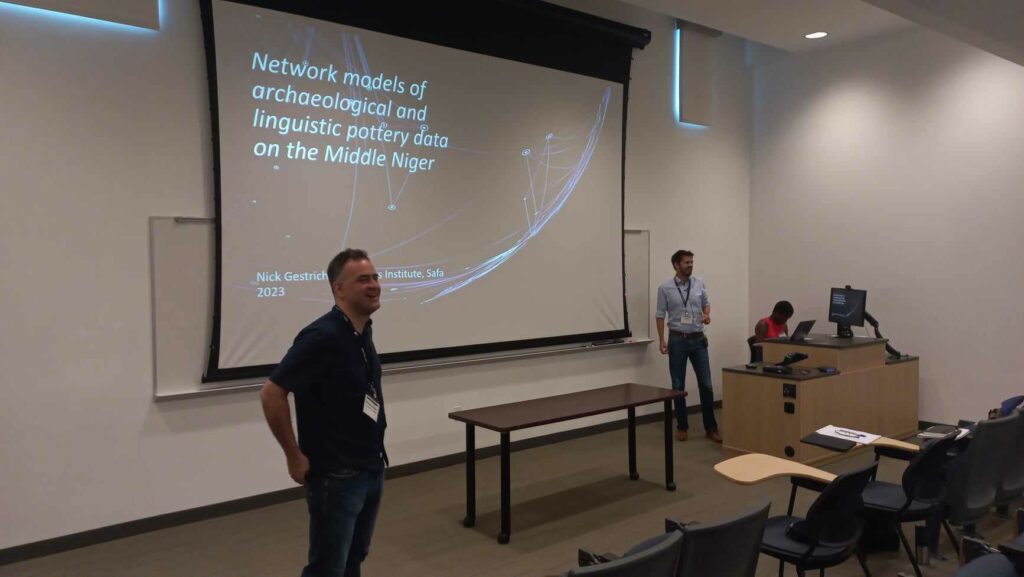
This was a particularly exciting session, exploring recent projects furthering the links between linguistics, archaeolinguistics and archaeology – in particular issues of the transmission and spread of of Bantu language groups (papers by Birgit Ricquier and colleagues, and Rebecca Grollemund and colleagues), and the development of pre-Bantu (Niger-Congo) languages in Western Africa (Koen Bostoen and colleagues). This collaboration between linguistics and archaeology sits alongside archaeogenetics as one of the most important advancements of recent decades for the study of the past.
The afternoon included sessions on indigenous archaeologies in West Africa (session 11), human origins (session 18), landscapes of resistance (session 21), pastoralism (session 33), and ethnography and indigenous knowledge (session 13). This included a further session in honour Susan McIntosh, this time recognising the ongoing significance of her edited volume Beyond Chiefdoms: Pathways to Complexity.
The day’s conference was concluded with an introduction to the work of renowned Nigerian-American artist Victor Ekpuk, including the opportunity to view a number of his installations on display at Rice University.
This was followed by the conference reception, by which point it was clear that the delegates were in full swing, networking, and discussing archaeology.
Day 4 – Monday June 5th
The final day started with the ‘business meeting’, followed by a further morning of sessions, comprising rock art (session 2), built environments in West Africa (session 27), foraging in Pleistocene and Holocene southern Africa (session 34), and roundtables on pedagogy (sessions 35 and 40) and long distance trade in pre-colonial Africa (session 36). The afternoon program saw sessions on archaeology of Zambia (session 4), community archaeology (session 9), stone Age technology and innovation (session 32), life and death on the Nile (session 22), and a roundtable on sites and monuments recording (session 39).
Carlos Magnavita (SPP project 4) and colleague presented on their recent work in Chad, in ‘Tié: Kanem-Borno’s first Islamic capital Njimi rediscovered‘, in the session Archaeological Investigations of Cities and Polities chaired by Carlos and Dil Singh Basanti. Cezary Szymanski (SPP project 4), who also works on this project, presented his paper ‘In the shadow of tumuli: A first pottery sequence for Mbacké in central-west Senegal’ in the session Ceramics and craft production (session 5) (Figure 8). This was an excavation project directed by Sonja Magnavita, reported on in Day 3, with Cezary working on the pottery for his Masters dissertation. The pottery has also been incorporated into the Connected Foodways project, undergoing technical and organic residue analysis.
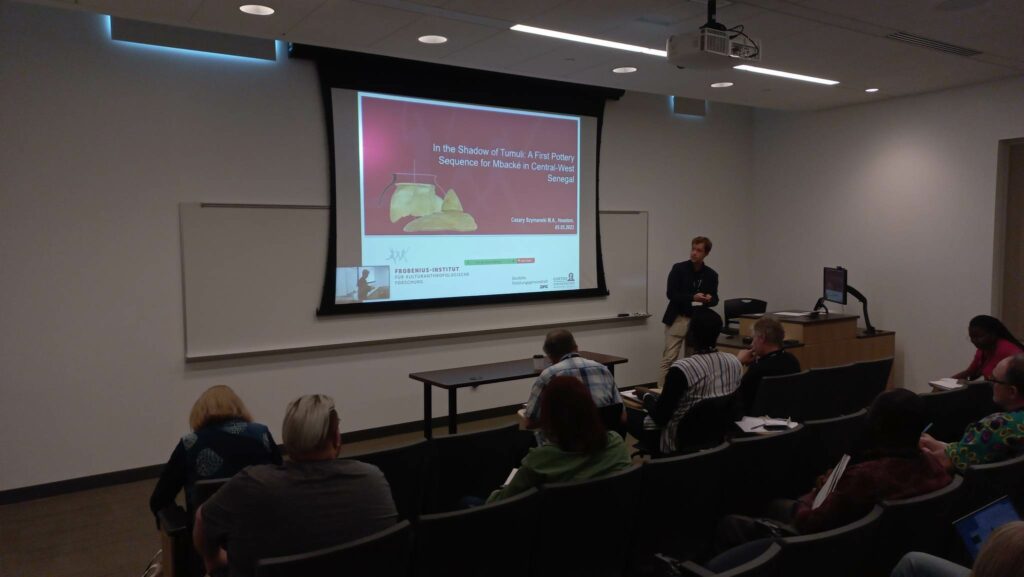
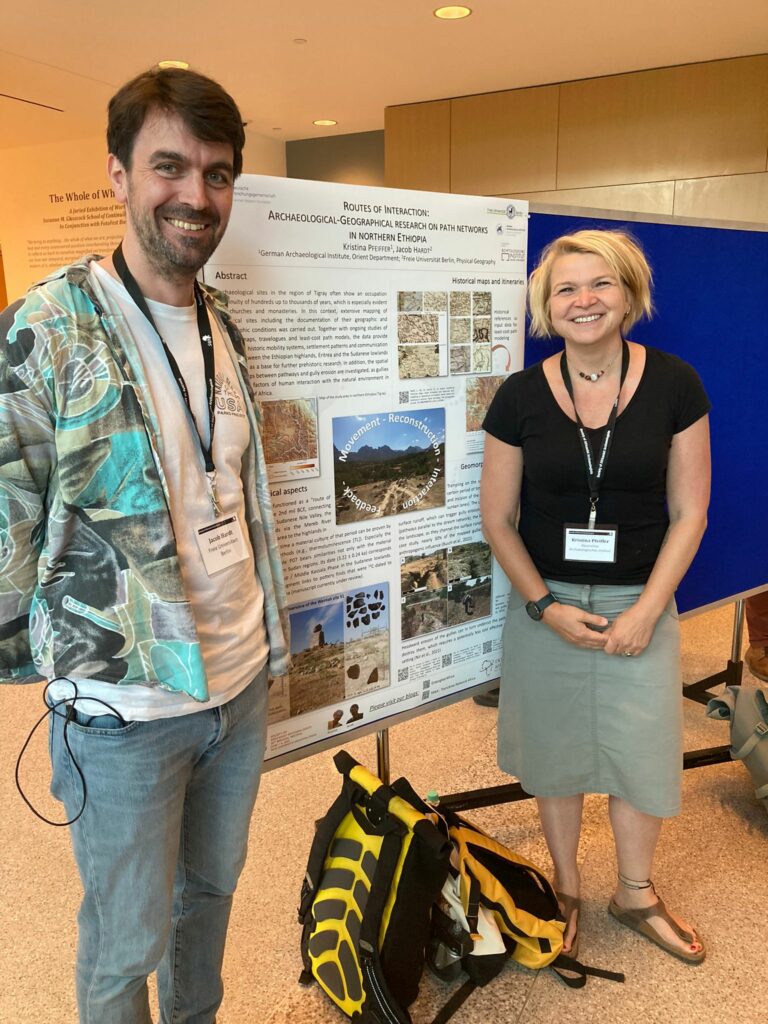
Finally, Kristina Pfeiffer and Jacob Hardt (SPP project 7) presented a poster titled ‘Routes of Interaction: archaeological-geographical studies of pathway networks in the northern Horn of Africa’, which was on display alongside other posters in the main conference reception area (Figure 9).
Summary
The African continent was well represented in the West, Centre and South by clusters of papers originating in long-term, collaborative, often multi-disciplinary, projects.
However, with the exception of Pleistocene and early Holocene studies, it is the author’s sense that north-east and northern East Africa is typically under-represented at African archaeology meetings. It was especially gratifying therefore to see so many papers concerned with the archaeology of Sudan. No small part of this was due to the presence of a considerable number of researchers from the Polish Centre of Mediterranean Archaeology in Warsaw (PL), who have major projects at Old Dongola, in northern Sudan, and Soba, just south of the capital Khartoum. It is rather sad therefore that this burgeoning presence must coincide with the current tragedy unfolding in Sudan itself, meaning that so many Sudanese archaeologists could not attend to present their own presentations in person or even online. Nonetheless, it is a hope that Sudan archaeology represents a regular fixture at such meetings in the future, with so much of its archaeology having deep African connections.
Throughout the meeting, the majority of the sessions were simultaneously in-person and online, with papers being a mixture of both. For those not able to attend, important in-person and digital ‘hubs’ had been organised in Africa for delegates able to reach them. These were located at the British Institute in Eastern Africa (BIEA) in Nairobi (Kenya), and at the University of Ibadan in Ibadan (Nigeria).
Many of the presented papers and organised sessions built on on-going research also presented during the delayed 2020 meeting of SAfA, held online in 2021, and the in-person meeting in Zanzibar in 2022 of the Pan-African Conference, which many of the speakers also attended – demonstrating the importance for researchers to attend the global-round of such meetings – in Africa, in the America’s and in Eurasia. In combination, it is possible to get a real, tangible sense of the great breadth and quality of collaborative, multi-disciplinary research currently being undertaken across the African continent in service of its past and for the benefit of the current generations of caretakers of its cultural heritage.
The program for the conference can still currently be downloaded from the conference homepage, whilst videos of the presentations are to be made available online to SAFA members.
